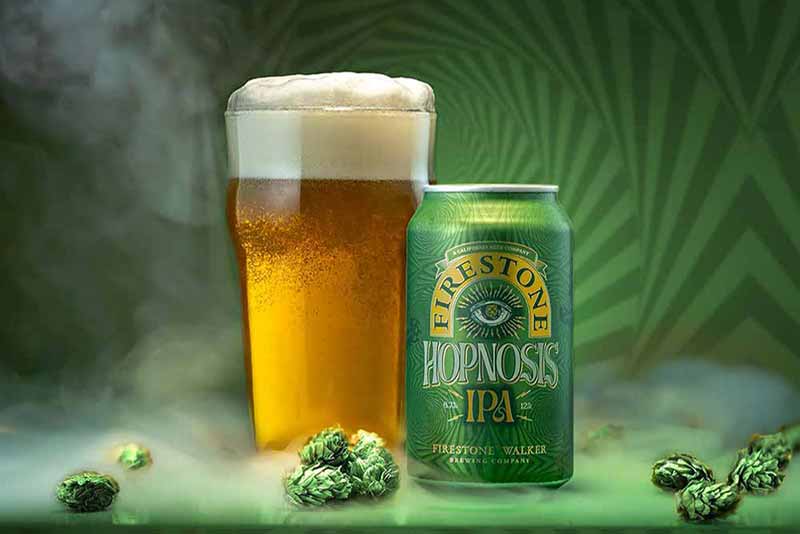
Consumers love drinking any version of an IPA. According to the latest data from Untappd, variations of the hop-forward beer are the top three checked in by craft beer drinkers using the app and account for five of the top ten styles checked in.
In 2021, beer drinkers checked in the most popular versions of an IPA a whopping twenty-two million times.
Why would the Cold IPA be any different? This up-and-coming offshoot style has steadily gained popularity over the last few years.
Unlike other recent IPA adaptations that were flashes in the pan—like the India pale lager (IPL) or brut IPA—the Cold IPA took the good from those failed attempts and created a style that promises to be here for the foreseeable future, according to experts in the field.
Read why brewers at Firestone Walker Brewing, Hop Butcher for the World, and Wayward Lane Brewing love the Cold IPA and believe it could be the next generation of the American IPA.
Affordable, Industry-Leading Brewery Software
What Is a Cold IPA?

Photography courtesy of @waywardlanebrewing
The Cold IPA style is a new spin-off from the traditional American IPA. The brains behind this adaptation, then Wayfinder Brewmaster Kevin Davey, had been tinkering with concepts until, in 2018, he found the perfect blend to showcase the hops of a West Coast IPA style while keeping it crisp, clean, and crushable. The result: Wayfinder’s Relapse IPA.
For his Cold IPA, Davey started with a grist including some adjuncts, fermenting the beer at colder temperatures than a standard IPA and with a lager yeast strain.
“It’s an extremely dry, light-in-body West Coast IPA, but it has to have adjuncts,” Wayward Lane Brewing Brewer Adam Rosenthal says. “It has a really super light base to accentuate the hop character.”
Hop Butcher for the World Co-Founder and Brewer Jude La Rose says he loves the style for its tight, clean hop and malt character and how it differentiates itself from a West Coast IPA.
“[The Cold IPA] is a sum of the process and ingredients,” La Rose says. “The colder-than-ale fermentation saves you from that fuzzy glow and leaves a snappier, crisper visual of its profile, which allows the hops to come across more succinct.”
Firestone Walker Propagator R&D Brewhouse Manager and Brewer Sam Tierney says they like to follow some core principles when crafting their Cold IPAs. Essentially, Tierney goes for a lager yeast strain to ferment at warmer-than-lager temps but lower-than-ale temperatures while trying to get an easy-drinking IPA.
“It’s dry. It’s light. And it’s letting that crisp lager character really take center stage,” Tierney says. “And then, you know, beyond that, I think hop character is optional, but it should follow a relatively solid West Coast profile, not overly juicy and sweet. It’s got to have some bitterness, but we like nice modern hop character to it as well.”
What Should Your Grist Be for a Cold IPA?

Photography courtesy of Firestone Walker Brewing Company
The Cold IPA has a very basic grist, with mostly light malts, but differs from typical West Coast IPAs as it includes adjuncts to bring some body and mouthfeel while maintaining a dry, crisp finish.
“It’s gotta have a really light malt character, so you’re gonna go basically for all two-row or pilsner malt, and then adjuncts are good too,” Tierney says.
Firestone’s Cold IPA, Hopnosis, doesn’t one-hundred percent follow the prototypical Cold IPA recipe, as Davey created it with adjuncts, notably rice and corn.
“The adjunct part, I think, we definitely don’t strictly stick to that; Hopnosis is brewed with all malts,” Tierney says.
Rosenthal says he follows Davey’s methods of creating the proper Cold IPA grist, blending multiple pilsner malts because of the levels of dryness different brands contribute.
All told, Rosenthal says that Wayward Lane’s Cold IPA uses a fifty-fifty split of Gambrinus and Rahr pilsner with twenty-seven percent torrefied flaked rice.
He adds that they have used wheat malt in many of their Cold IPA recipes to add a touch of body and mouthfeel. And he likes to add some six-row malts for extra diastase, which helps with their mash.
La Rose says that Hop Butcher leans towards German pilsner malts in building his Cold IPA. He adds that he always uses a little bit of acid malt in their recipe for pH adjustment. They use carafoam for some head retention and a little Munich malt and white wheat, which La Rose notes, “provides a little of that sweet complexity and a way of providing that in a snappy way. It builds up to us trying to get a succinct profile for a crisp expression.”
What Yeast Should You Use in a Cold IPA?
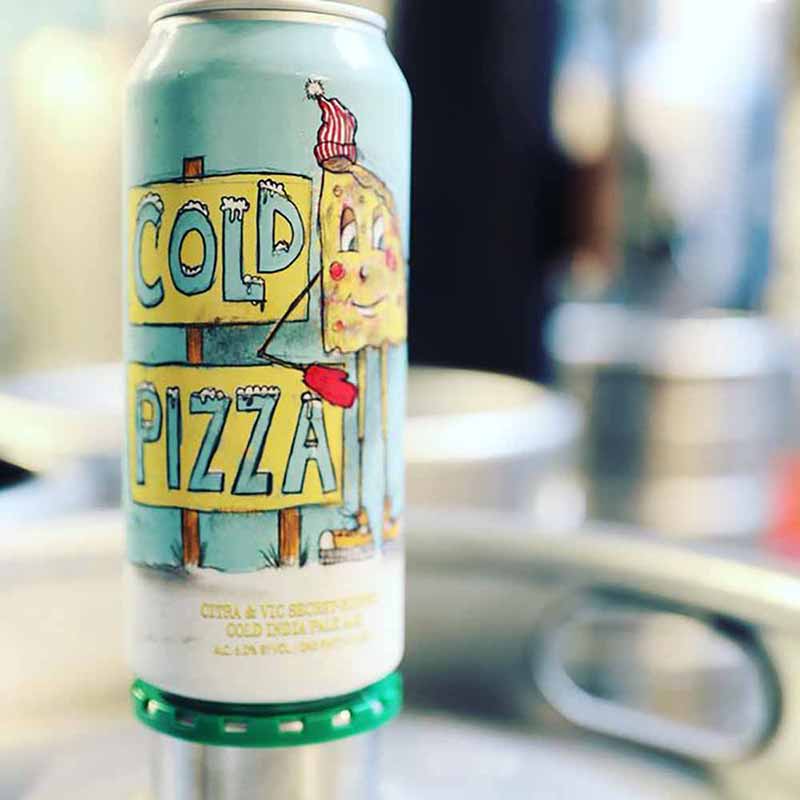
Photography courtesy of Hop Butcher For The World
When Davey created the Cold IPA in 2018, the yeast he wrote into the recipe was a German-style lager yeast, Weihenstephan 34/70. The brewers in this story try to follow that guideline, for the most part.
At Hop Butcher, La Rose discovered Davey’s Cold IPA while out in the Pacific Northwest for hop selection, popping into Wayfinder and trying the beer style for the first time. After returning to their brewery, he attempted to brew the beer based on his impressions.
“We used a lager yeast, but it’s the Augustiner lager yeast,” La Rose says. “We used a slightly different yeast than [Davey] recommended, but just because we didn’t know how to do it, so we just picked what we thought was the right one.”
They’ve stuck with the strain.
Tierney says they try to stay true to the recipe Davey created, although the Firestone Walker brewer notes that the Cold IPA creator has said brewers could use California Ale yeast or Kolsch yeast strains to make the style.
“I think that makes it a little too vague,” Tierney says. “I personally like [Cold IPAs] as a lager-fermented beer.”
Firestone doesn’t use 34/70, opting instead for their house strain.
“We don’t have a ton of experience using different strains since we have an established house strain,” Tierney notes. “We have so much experience with it, so that’s what we stuck with.”
Rosenthal says Wayward Lane, like Davey, followed the original recipe, using the Weihenstephan 34/70 for its Cold IPAs. He said they have also tried out US-05 and Kolsch yeast strains with good results but typically return to the 34/70 strain.
At What Temperature Should You Ferment a Cold IPA?
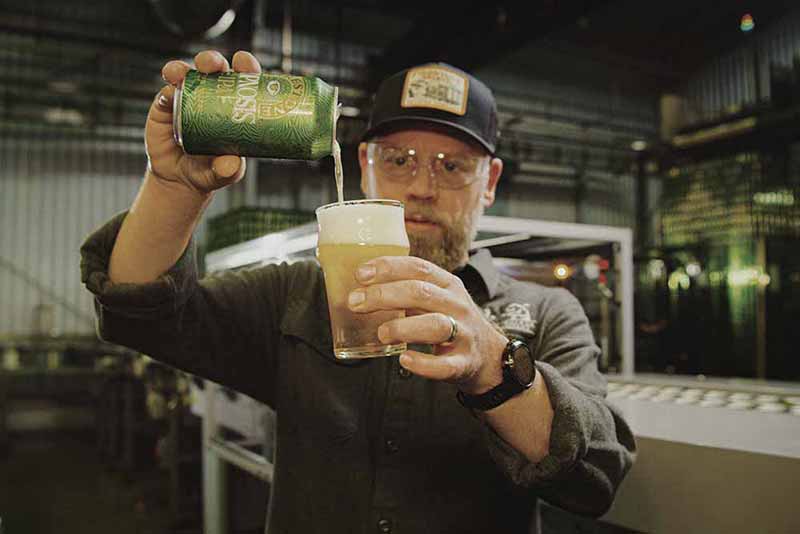
Photography courtesy of Firestone Walker Brewing Company
“We start mid-50s, go into the upper 50s, and finish out in the mid-60s,” Tierney says. “That’s pretty typical of a modern, quicker approach to making lagers.”
Tierney adds that the temperatures at which they ferment with the lager yeast keep the beer on more of an IPA timeline than the longer fermenting timelines of a lager.
“I don’t see this as a lager beer. I see this as a way of using lager yeast as a tool to create a great IPA,” Tierney says. “Don’t get caught up in the fact that it’s lager yeast. It still makes a very clean beer by ale standards, but it may have a slight fruitiness; there’s gonna be a slight ester expression from the lager yeast, but it’s not enough that you’re really going to notice it under the hops, it still seems very clean for an IPA.”
Tierney adds, “I think that mid-60s temp, not every lager yeast is going to perform really well up there, but I think most will, honestly.”
La Rose says they ferment their Cold IPA at fifty-two degrees Fahrenheit.
“Typically, I think you’d see a West Coast IPA ferment at sixty-eight [degrees Fahrenheit], so we ferment our Cold IPA at sixteen degrees [Fahrenheit] colder,” La Rose says.
La Rose says at the tail end of fermentation, they raise the temperature and give it time to condition and clear up, so the turnaround time isn’t as lengthy, despite starting fermentation at such a cold temperature.
“You could choose to treat it like a lager and go for an extended cold conditioning time,” he says. “You could also, as long as you raise your temperature and give it a diacetyl rest, and it passes all the tests for unwanted fermentation character, go ahead and treat it as a West Coast beer and keep those hop characteristics intact.”
Rosenthal says he pitches the yeast at about sixty-three degrees Fahrenheit and ferments at sixty-five degrees.
“It works shockingly well. No sulfur. Zero diacetyl issues,” he says.
Following fermentation, Rosenthal says he turns the heat up to seventy degrees for a two-day diacetyl rest and then drops it to around sixty degrees for a daylong soft crash. Then, after another day of rest to avoid hop creep, he gives it a hard crash.
What About Hops in a Cold IPA?
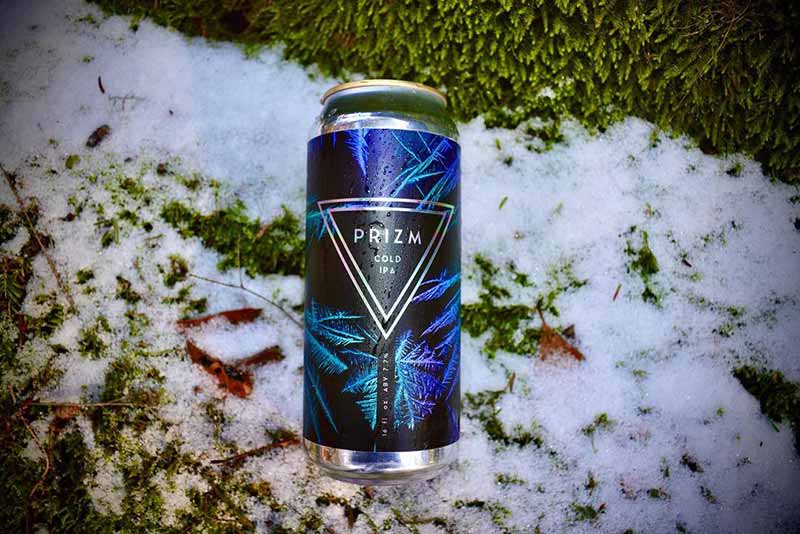
Photography courtesy of @waywardlanebrewing
Despite using lager yeast, a Cold IPA is not a lager and should really showcase the hops.
“A Cold IPA allows you to open up the playbook a little bit more, but I think those hops should tether back to that West Coast character,” La Rose says. “You should have the freedom to use some of the new [hops] coming along, and I don’t think that precludes you from using New Zealand varieties.”
La Rose says hoppy beers should stick to citrusy and dank hop profiles. With Hop Butcher’s Cold IPA he uses a five-minute hop addition, then a larger whirlpool addition at about one pound per barrel, before dry hopping toward the very end of fermentation at nearly four pounds per barrel.
Rosenthal says he layers the hops throughout the boil, beginning at ninety minutes, then applying an additional thirty minutes, and again in the whirlpool where they get the bulk of their IBUs.
“We use mostly Mosaic on the hot side,” Rosenthal says. “I’m obsessed with Mosaic for West Coast IPAs. It works beautifully with this style.”
Wayward Lane uses about four pounds of hops per barrel in the dry hops, with two-thirds Mosaic and one-third HBC-586.
“When you crack the can, you can smell it from five feet away,” Rosenthal says. “It’s a nice platform for hops to shine.”
Firestone Walker Brewmaster Matt Brynildson used Cryo Hops when creating their Cold IPA, adding Mosaic Cryo hops in mid-fermentation.
“A little bit of the logic there was there’s less vegetative materials so that could be more heavily mixed with the fermentation, and we felt like we got a really saturated hop character, really focused hop character from that,” Brynildson says. “Mosaic laid into the foundational piece of that, and then we use some Southern Hemisphere hops to then kind of move it into more of that new school realm.”
Four Tips You Need to Know For Brewing a Cold IPA
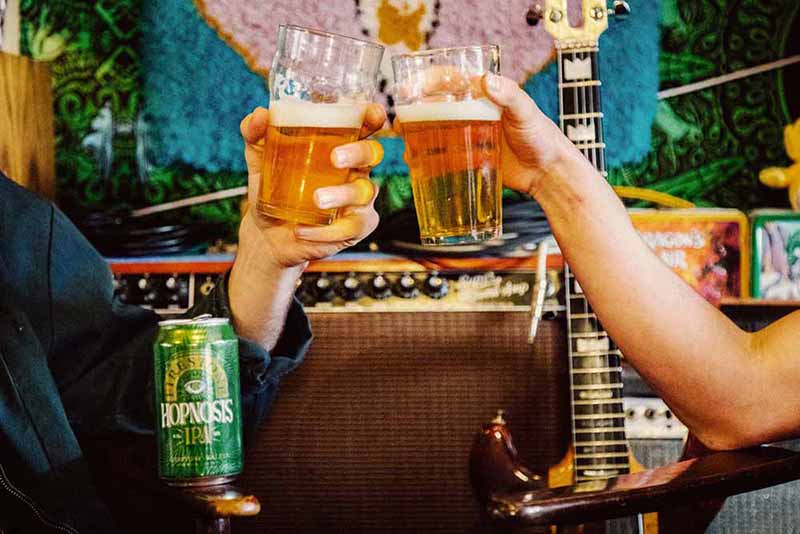
Photography courtesy of Firestone Walker Brewing Company
La Rose advised brewers embarking on their first Cold IPA not to overthink it.
“Don’t complicate it,” he says. “Show some restraint … and have tight brewing practices.”
Rosenthal says the key to creating a true-to-form cold IPA is the grist.
“Use adjuncts,” he says. “Adjuncts drive this style and make it different than a West Coast IPA.”
Tierney, who admits that the Cold IPA—unlike IPLs and brut IPAs—is a style that “has a lot of legs on it,” has one tip for brewers.
“Treat it more like an IPA,” he says. “I feel brewers will be making IPAs this way for a long time. It’s almost a technique, not a style. It’s a great approach. Brewers will keep making beers this way because it works.”
Brynildson adds that, as with all lagers, you must have a healthy yeast pitch.
“I think most people know this, but, you know, you got to have a really healthy fermentation,” he says. “Because if you have a sluggish lager fermentation, that produces more sulfur than normal, and yeah, that’s gonna be a problem.”
Five Examples of a Cold IPA
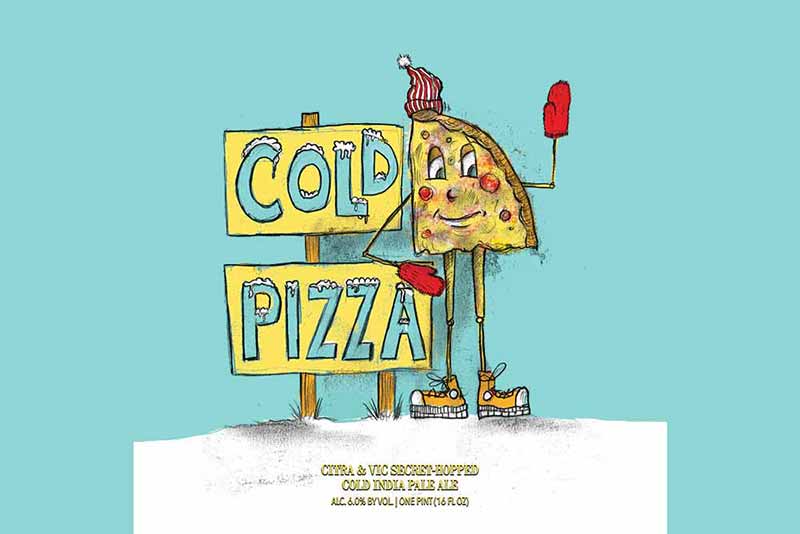
Photography courtesy of Hop Butcher For The World
Hop Butcher for the World currently brews Frozen in Three Dimensions as its Cold IPA. Hopped with Sabro and Simcoe hops, the beer clocks in at 6% ABV.
La Rose also highlighted one of Hop Butcher’s more popular Cold IPAs, Cold Pizza. It’s also 6% ABV but gets dosed with Citra and Vic Secret hops.
“It has tight cracker crisp malt character to allow … nice citrus and dank aromatics and flavors at the forefront, and the yeast did its thing,” La Rose says.
Wayward Lane Brewing’s Prizm Cold IPA is a 7.7% ABV beer with copious amounts of Mosaic and some HBC-586 hops in the dry hop, giving an aromatic Pacific Northwest hop expression.
Rosenthal says Prizm is “pretty true to the Cold IPA as Davey presented it to the world.” It uses a blend of different pilsner malts, some torrefied flaked rice, and wheat malt for body.
Firestone Walker’s Hopnosis is 6.7% ABV with about forty-five IBUs. The latest version of the Cold IPA is brewed with Mosaic Cryo hop pellets and double dry hopped with U.S. and New Zealand hop varietals, giving tropical fruit flavors.
Brynildson explains how Tierney has worked tirelessly to create multiple Cold IPA options outside of Hopnosis and Double Hopnosis.
“I think every formulation Sam’s working on there’s a little different hop theme, with the Cold IPA kind of being at the base just in terms of setting the foundation,” Brynildson says.



